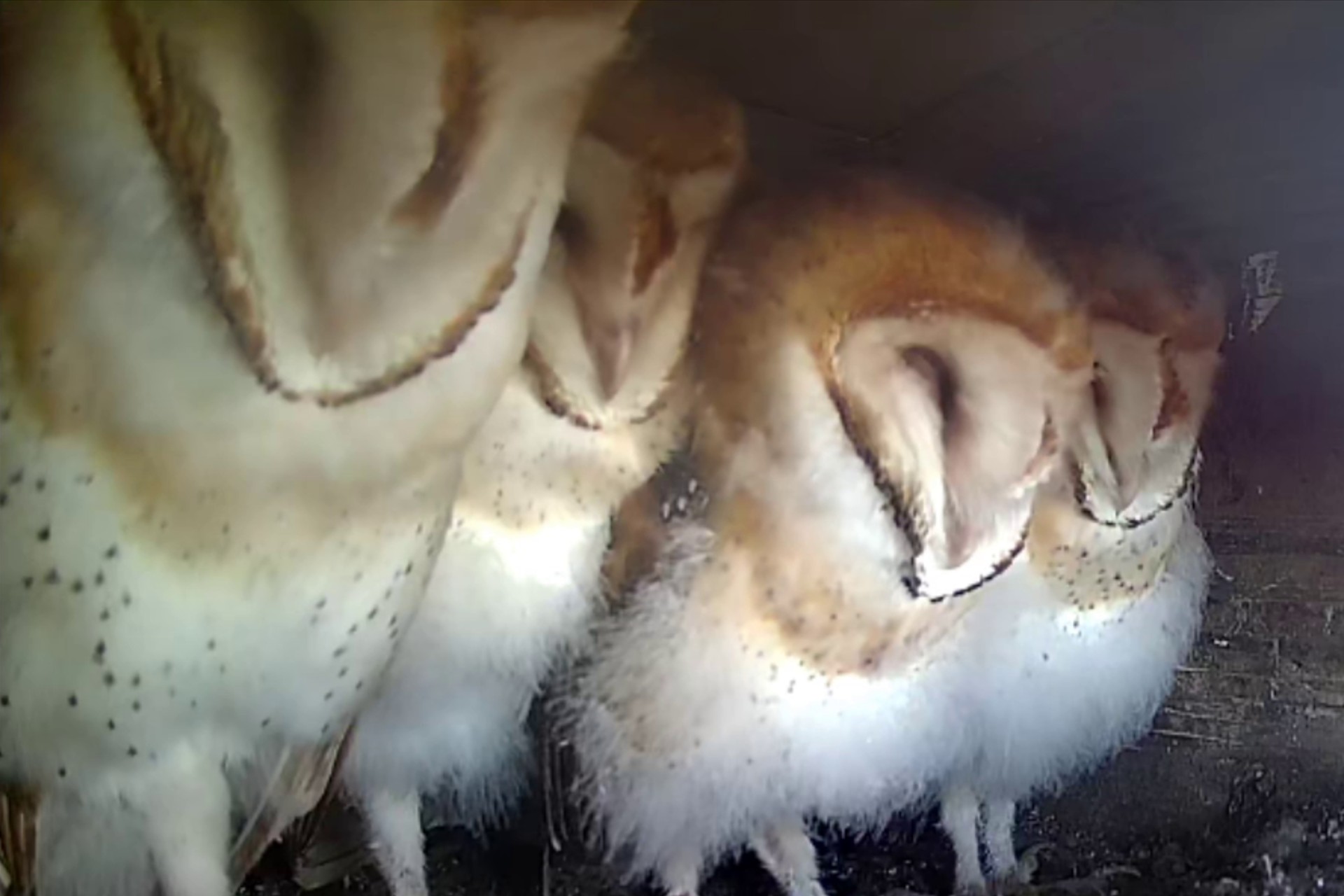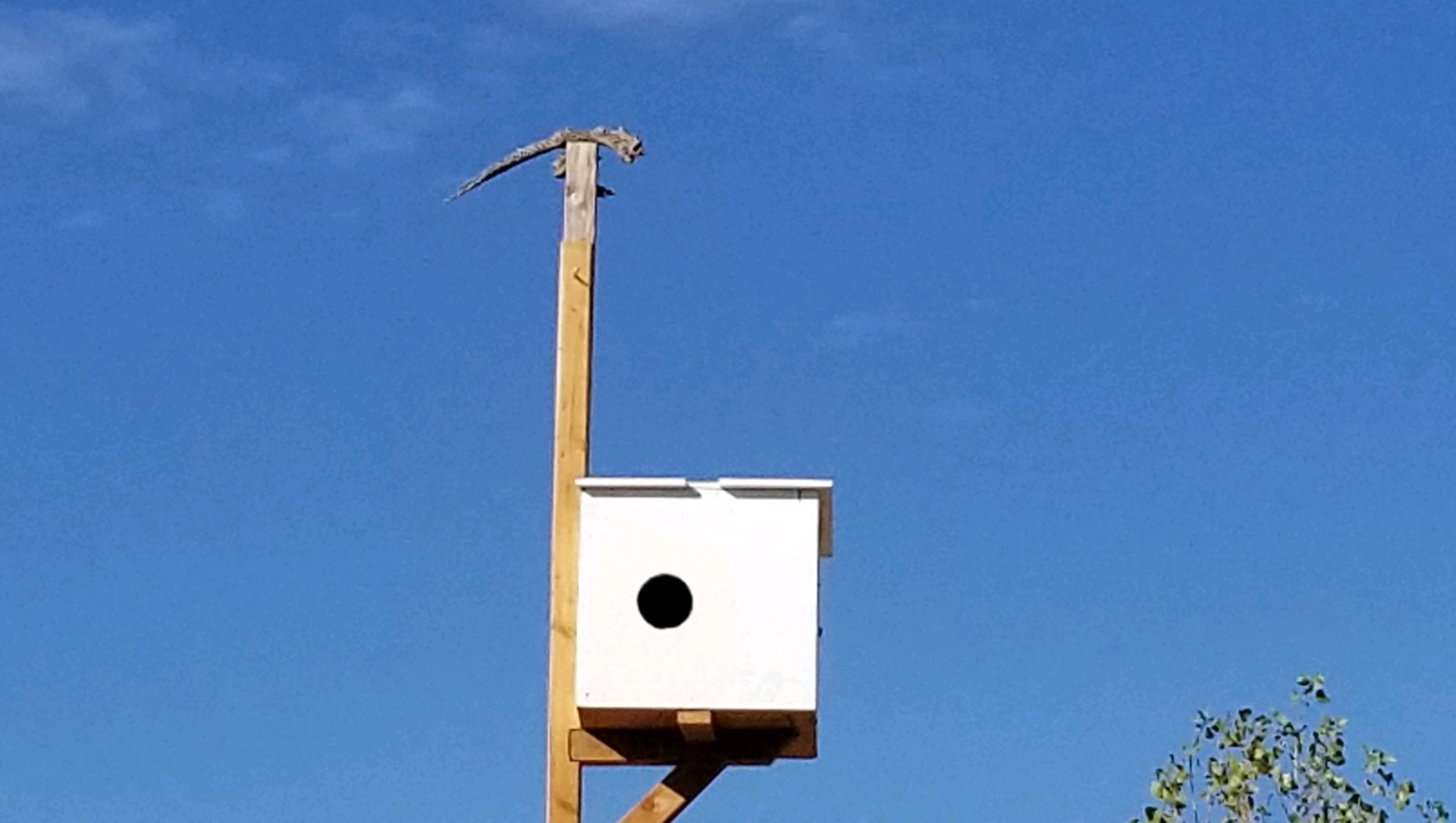The Nest

Owlets in the nest box!
The Nest:
Barn Owls will find places to nest in barns (where they get their name), buildings, hollow trees, rock crevices or any nest boxes they can find empty. Once, the male finds a nesting spot, he makes clicking noises, much like that of a bat, in order to bring a mate and invite her to come check out the nest.
Information about Nest Boxes:
Some nest boxes have a small perch directly outside the entrance hole. If you are wondering why we do not have one, this is the reason why:
The people who gave us our box told us that when they had originally put up their box, it had a perch in front of the hole opening. Unfortunately, one day when they went to check on a large clutch that had been hatch in it, they found that a predator had gotten into the box and killed all of the babies. It was at that point that they removed the perch and hadn’t had a problem after that.
While it would be nice for the fledglings to make it easier for them to get into the box, for safety reasons, we have chosen not to put one on ours. Our owlets have been able to eventually figure out how to get back into the box even without a perch.
Here's Our New Box! It's Dimensions are 20x20x20

If you should decide to put a nest box on your property, we would suggest a few things we have learned this year that are important to know:
1 - Make sure your box is large enough. Be careful where you get your information from because some of the information of the internet is not correct. A box should be at least 18X18X18 square if not larger.
2 - Location is very important! Because it can get very hot in certain areas, keep this in mind while picking out your location. Try to put the box in a place where there is shade available. If it is going to be out in the open, at least be prepared to make some adjustments for a shade source and other cooling elements in the summer months.
3 - Paint the outside of box white to keep it cooler in the summer months in case you get a second clutch. Maybe even drill some ventilation holes in the top of the sides. Another adaptation you can use is a mister system.
4 – It should be between 12-15 ft. high and the opening should be shielded from the sun and wind. Ours is pointed in a NE direction.
The reason this is so important is that once the temperature reaches about 95 degrees inside the box, it is harder for the babies to regulate their temperature and get cool. At that point, they will fall out of the box trying to get cooler or jump out of it. This happened to us this year and was very devastating! We have made many changes to our box since our babies have left, but this was something we had never experienced before even though we’ve had our box for years and had no idea that would be a problem. We have spoken to the project wildlife rehab in our area and those were some of the suggestions they recommended.
One more quick note: The wildlife rehab said if you ever find a baby that is not injured and can put it back into the box, it is good to do so as quickly as possible. She said that Barn Owls do not have very good sense smell and do not reject the babies if they have been handled. If you should find an injured Barn Owl, please contact your local Project Wildlife Rehab. They are all over and are very willing to help and give any information needed.